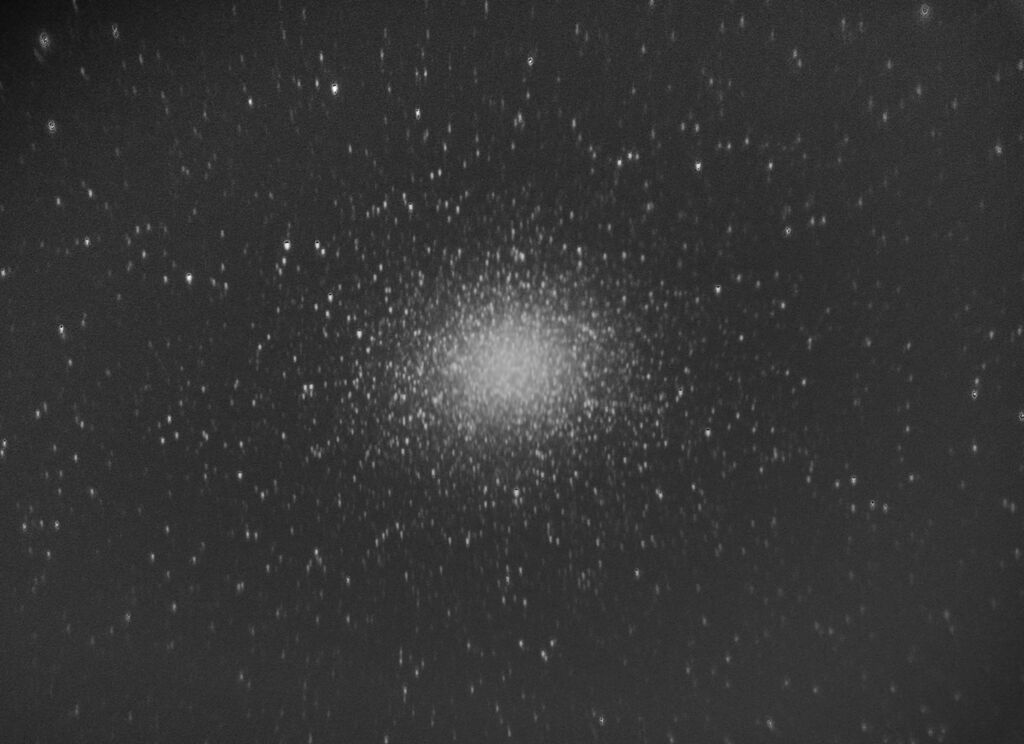by Karl Silverberg
I met up with Steve Bellavia at my Hamptons Dune Rd spot last night (maybe the spot doesn’t belong to me but it feels that way.) Lot of humidity in the air — my SQM was reading a few notches lower than normal — about SQM 20.8 — normally I get about 21.0. The humidity also seemed to decrease the transparency a bit, or maybe it just seemed less transparent because the sky was slightly brighter. I brought out my 14in Dob. Steve brought out his imaging gear. I ran electronic dew heat to my secondary — good thing I had my AP gear with my dew heater, and Steve loaned me a small dew strap. The main object we came to see was Omega Centauri (ω Cen or NGC 5139). Omega Centauri is the largest Globular Cluster in the Milky Way, and is located extremely low at Dec −47° 28′ 46.1″. The giant cluster transited about 11:55pm. We started looking about an hour beforehand in the binoculars — 15×70’s. At about 60min and 30min before transit, despite locating the nearby guidepost star, we could not locate OC (Steve may have had it but it was not prominent). We weren’t sure if the horizon was too hazy to see OC. Then just at about transit, around 11:45pm, I checked again, and sure enough it popped out, right where it was supposed to be. It has about the same brightness as M4, which was visible at that time as well. This is the second year in a row Steve and I caught Omega Centauri, and both times from the Hamptons. Even at its highest Omega Centauri is extremely low in the sky, only rising about 1.75 deg above the horizon.


